Launch: Hands-On With System76's Keyboard
Last week I received a package. At first, I didn’t know what it was. I wasn’t expecting anything from Amazon; I haven’t ordered anything there recently. Then I realized, “This has gotta be that keyboard from System76!” It took so long to get this that I had nearly forgotten that I was going to get a review unit.
And sure enough, upon opening the package, it was none other than the Launch – the ultra-customizable keyboard from System76. It’s actually kind of nice having something other than a laptop to open up and review.
The particular review unit I received is using jade switches, meaning they offer this sort of “click” sound when pressing a key. When ordering a unit, you can either get this or royal switches – tactile keys that aren’t as loud when pressing them. The only other thing you can customize when ordering one of these is how long you want the warranty period to last. Price comes to $285 with either type of switch.
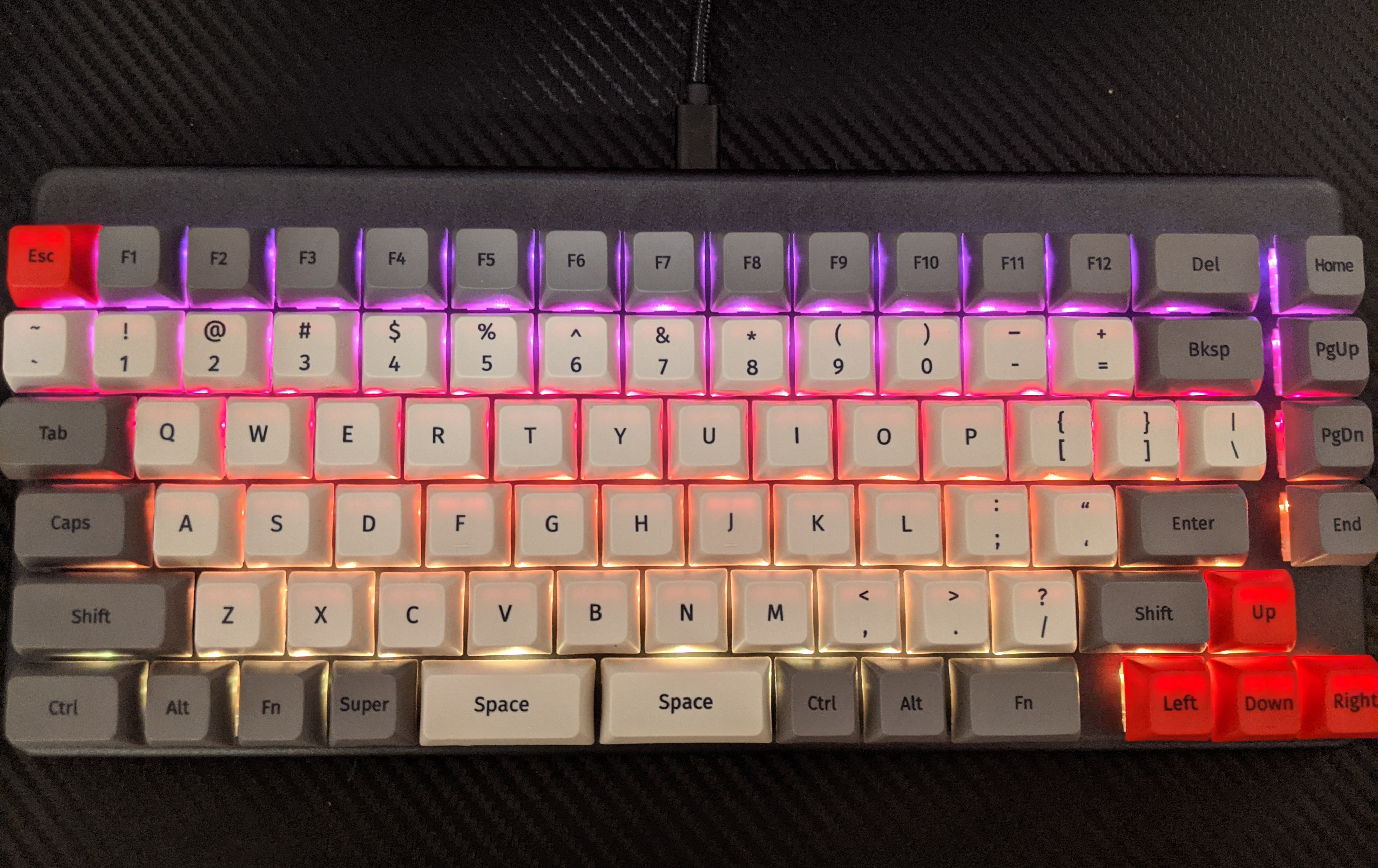
What are the package contents? Upon lifting the top side of the box, besides the keyboard, we get a few extra keys, a USB-C cable, another cable with USB-C on both ends, a key puller, a magnetic bar that sits underneath the keyboard to give it an elevated position, and a welcome letter.
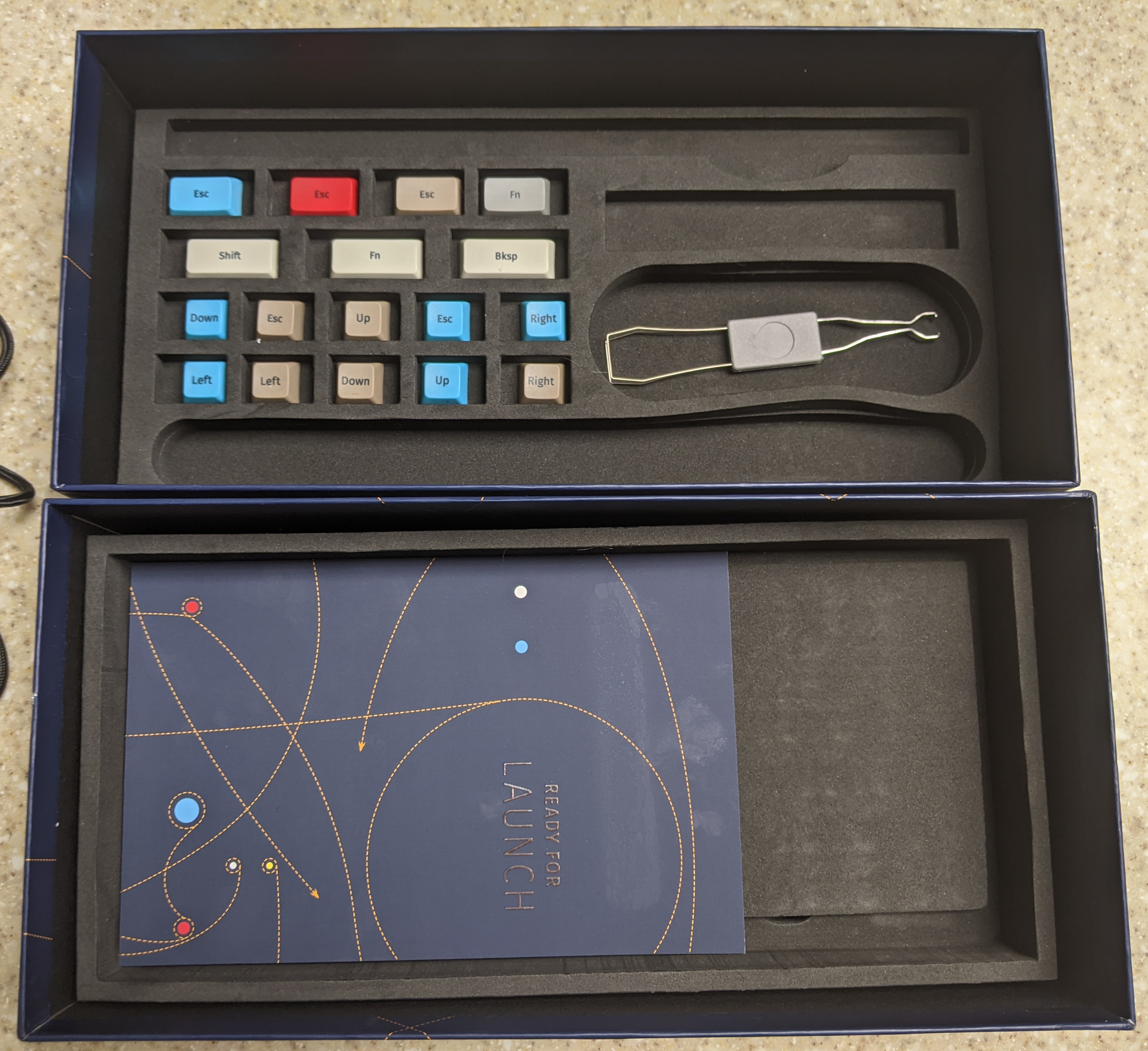
Upon getting the keyboard out, you’ll notice it’s a bit on the heavier side. This is because it consists of an aluminum chassis. It’s just a little over two pounds (948 grams). You’ll also notice they’ve tried to make the package take up the least amount of space that it possibly can; there’s very little casing to the left and the right where the keys begin and end. There is no NumPad. Towards the top of the chassis is 3 USB-C ports, one in the middle, and the others on opposite ends. Next to the opposing ports is a USB 3.0 port on each side. I have yet to figure out what these ports do; perhaps they’re for upgrading the firmware on the keyboard. Or perhaps it’s just a USB hub for adding connectivity with other devices. The only one that I currently use is the USB-C port in the middle; that’s the one that connects to the PC for power.
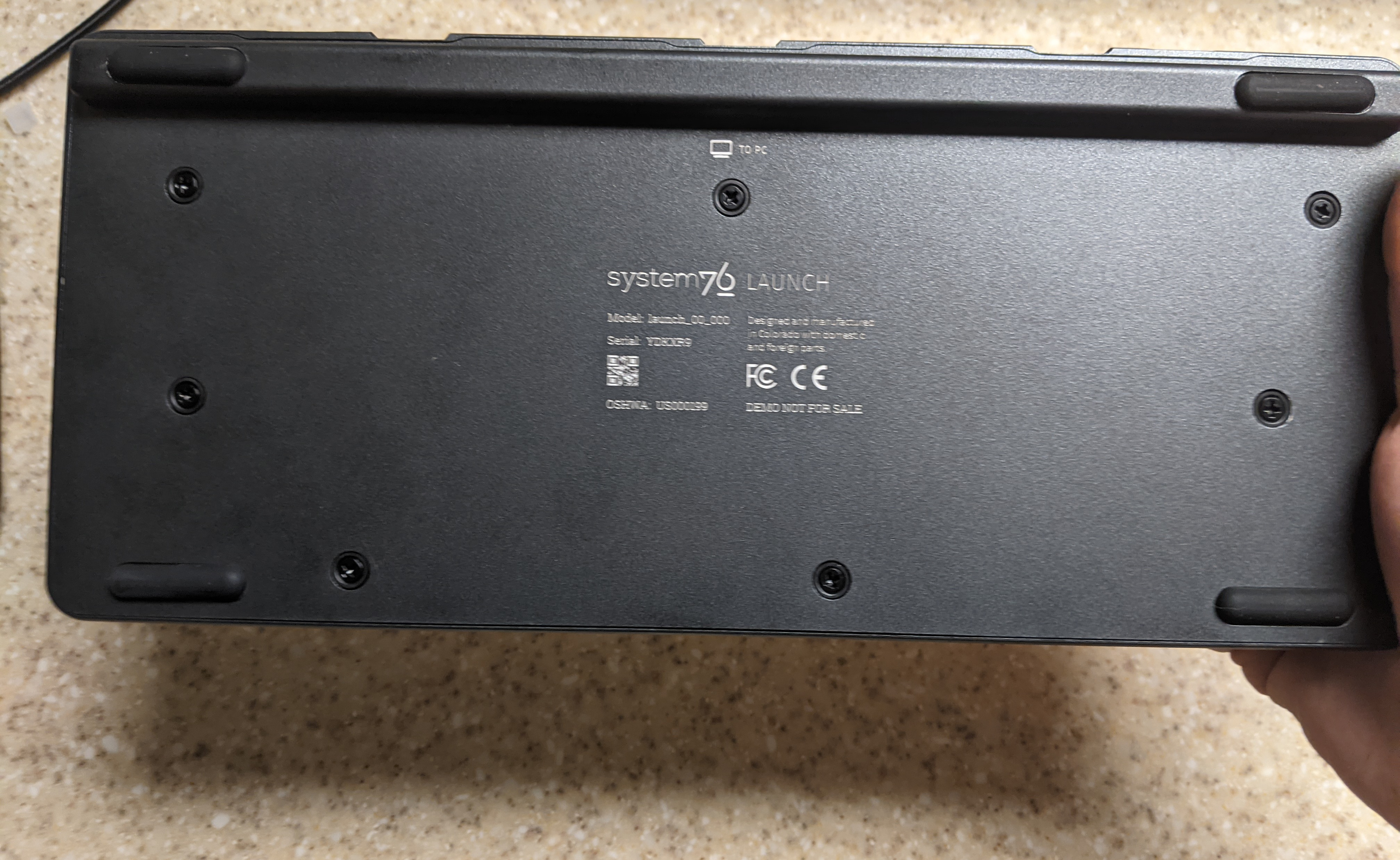
For the sake of comparison, here is the difference in size between the Corsair keyboard that I’ve been using previously, to the Launch:
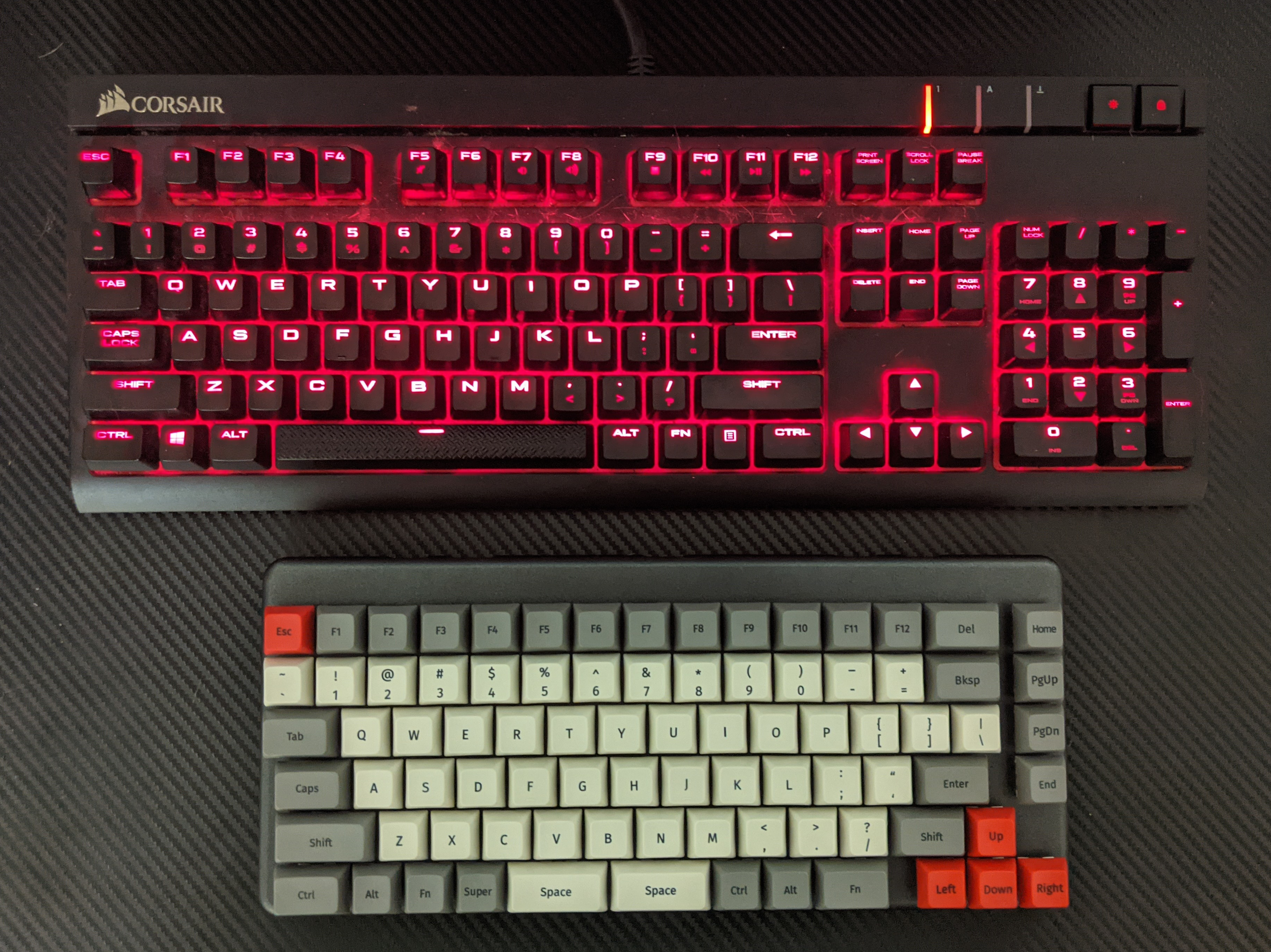
Something that I thought was interesting – and something that I’ve never come across before – this keyboard has two Space Bars. Combined, they’re about the length of a regular Space Bar, but they’re split in the middle. This allows the typer to replace one (or both) key(s) with, for example, the Shift key, Function, or Backspace. You can then assign this key to what the label says by using System76’s keyboard configurator app. The keyboard configurator is fully open-source and licensed under GPLv3.
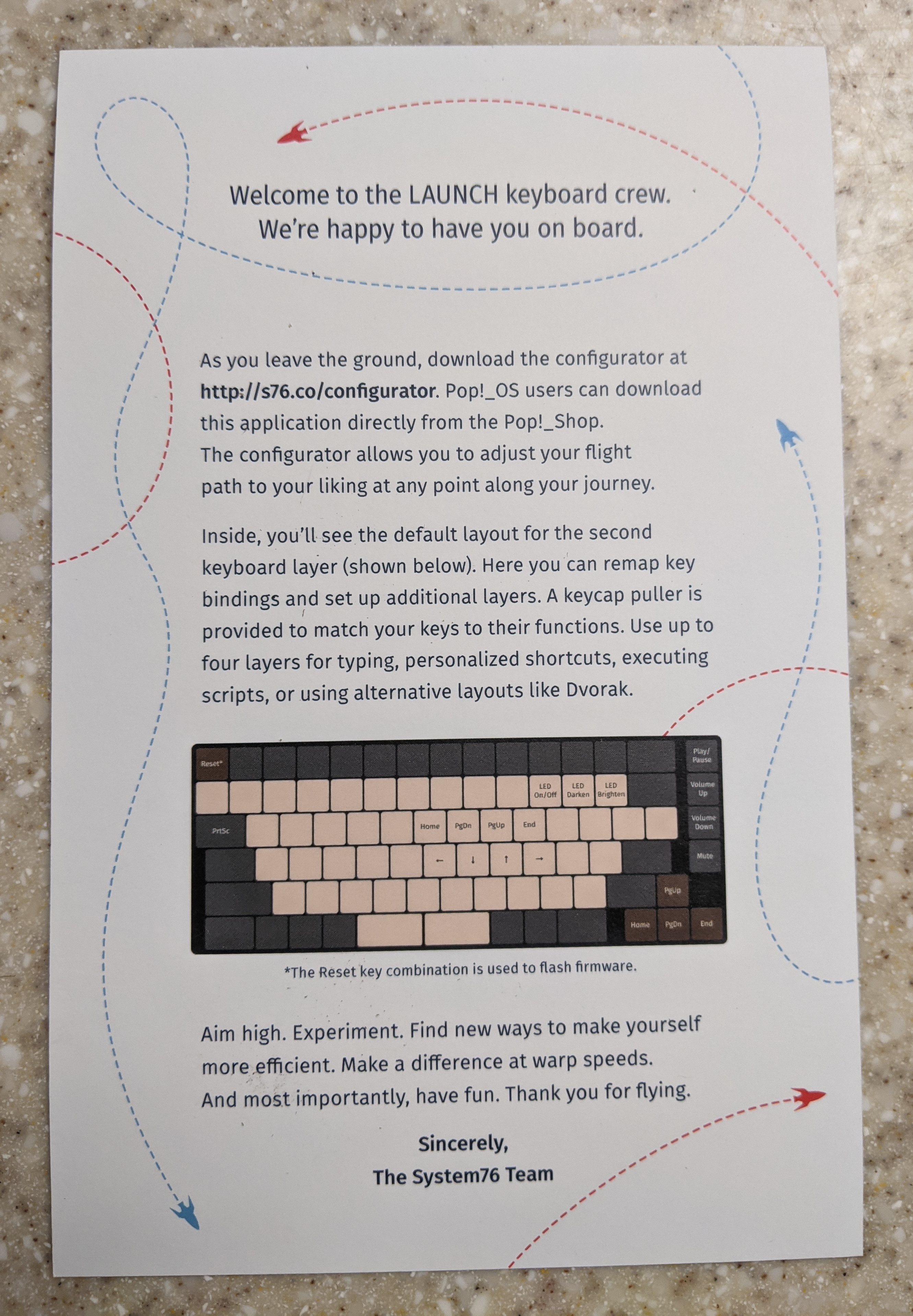
While, of course, System76 advertises their configurator app as available for Pop!_OS, other distros can benefit from the app as well. You can grab an AppImage over on the Releases section of their GitHub page, or you can compile from source. Unsurprisingly, it’s also available in the AUR. If you wanted to use this keyboard outside of Linux, you can do that too, as there’s an MSI and DMG installer for Windows and Mac respectively.
How does the keyboard itself feel? It feels fantastic. I’m typing this very review with it on Arch via Firefox. Very fast, actually. Not to toot my own horn, but I’m not even looking at the keyboard while I’m typing. I’ve gotten used to it that quickly. It’s loud. It’s clicky. I like that. It’s something that, should you decide to take this to work with you, you’d probably drive your co-workers insane over the sound. Strangely enough, when I first connected the keyboard to my PC with the provided USB-C cable, it wasn’t working. The PC didn’t pick up the keyboard until I downloaded and launched the Keyboard Configurator app. After that, it was working fine, even when the app is closed.
The only small hiccup I’ve noticed while typing is the Backspace key. It’s located to the right of the + key, like it is on most other keyboards, but it’s small and narrow. Often my pinky has glazed over this key whenever I make a mistake while typing, and end up pressing a different key than I intended. The Delete key has a bit of an odd location at directly above the Backspace key – on my Corsair keyboard, the Delete key is located southeast of the Backspace key. Though I don’t use the Delete key as much as I do Backspace, that has also required some adjustment. Other than that, transitioning to the Launch from my previous keyboard has been pretty straightforward.
No Caps Lock LED. With all the RGBs on this thing, you’d at least expect some kind of sign from the keyboard that the Caps Lock is on. But no, it ain’t there. The only way you can tell Caps Lock is on is through your operating system. Not a significant complaint; just be aware of it though.
Upon connecting the keyboard to your PC, you’ll notice a beautiful aesthetic that comes with the keys; they’re LED backlit and are capable of emitting hundreds of different, vibrant, bright colors. By default the colors will move across the keyboard in a horizonal-like fashion, and will emit a rainbow of some sorts in a way that’s hard to explain. With the Keyboard Configurator app, you can customize how the LEDs look, from how bright they are, to their saturation, to what speed the colors move, to what sort of pattern the LEDs will follow. Instead of having the rainbow colors move horizontally, you can have them move vertically, you can make the flow move like a pinwheel, you can have a splash of different colors spread every time you touch a key, or you can just disable the LEDs entirely.
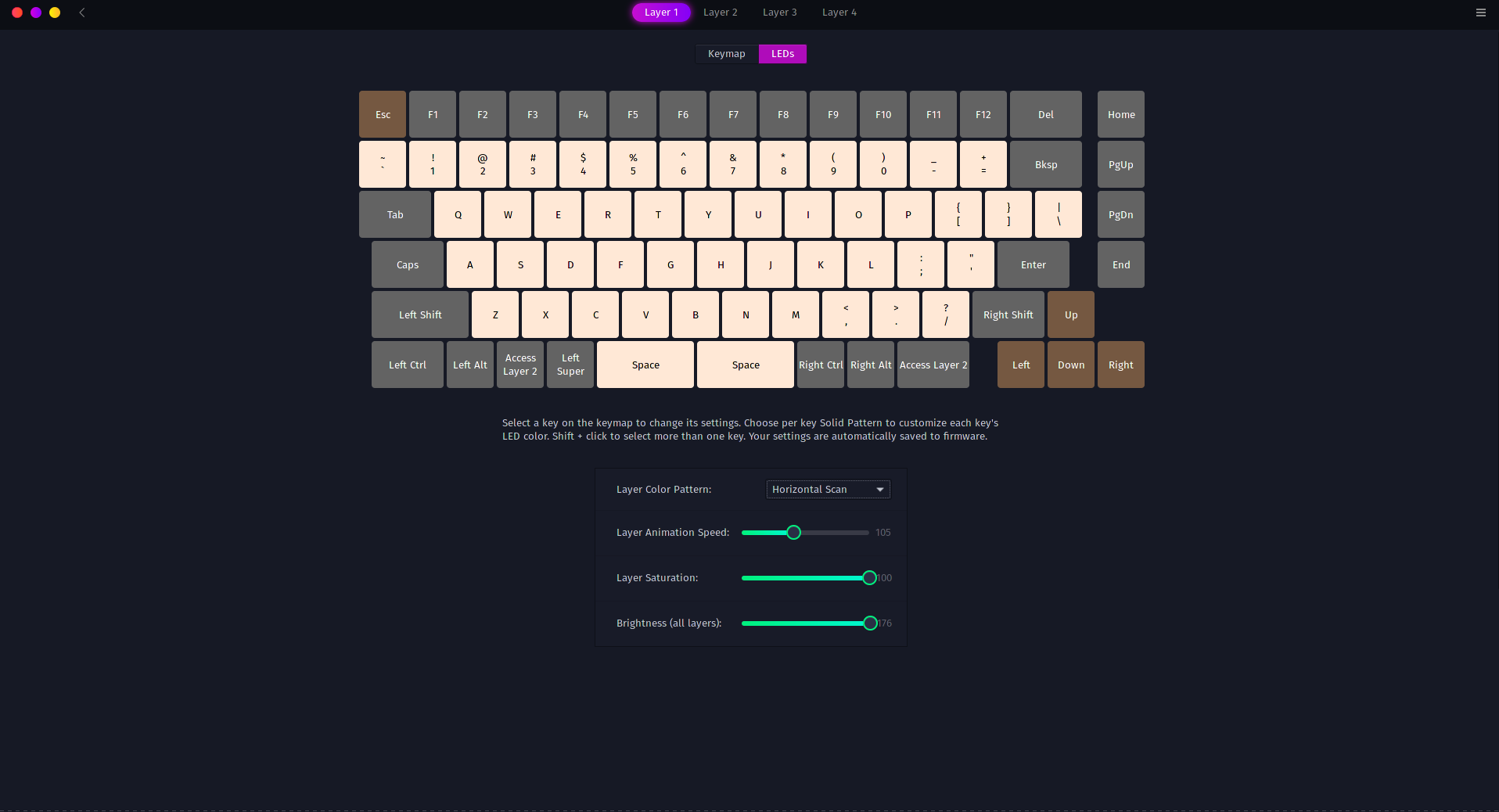
The Keyboard Configurator app is capable of doing so much more. You can customize as many as four different keyboard layouts. You can then change between layers on the fly with the press of one key. By default, you’ll get two layers. The first is exactly what’s printed on each key. The second layer is activated by holding one of the Function keys. When this key is held down, only some of the LEDs on the keyboard will light up. This is because only these keys will do anything when pressing them. While the second layer is active, you can use some of the keys to change the LED brightness, move your web page up or down, and pause, play, skip, or go back to a song if media is playing.
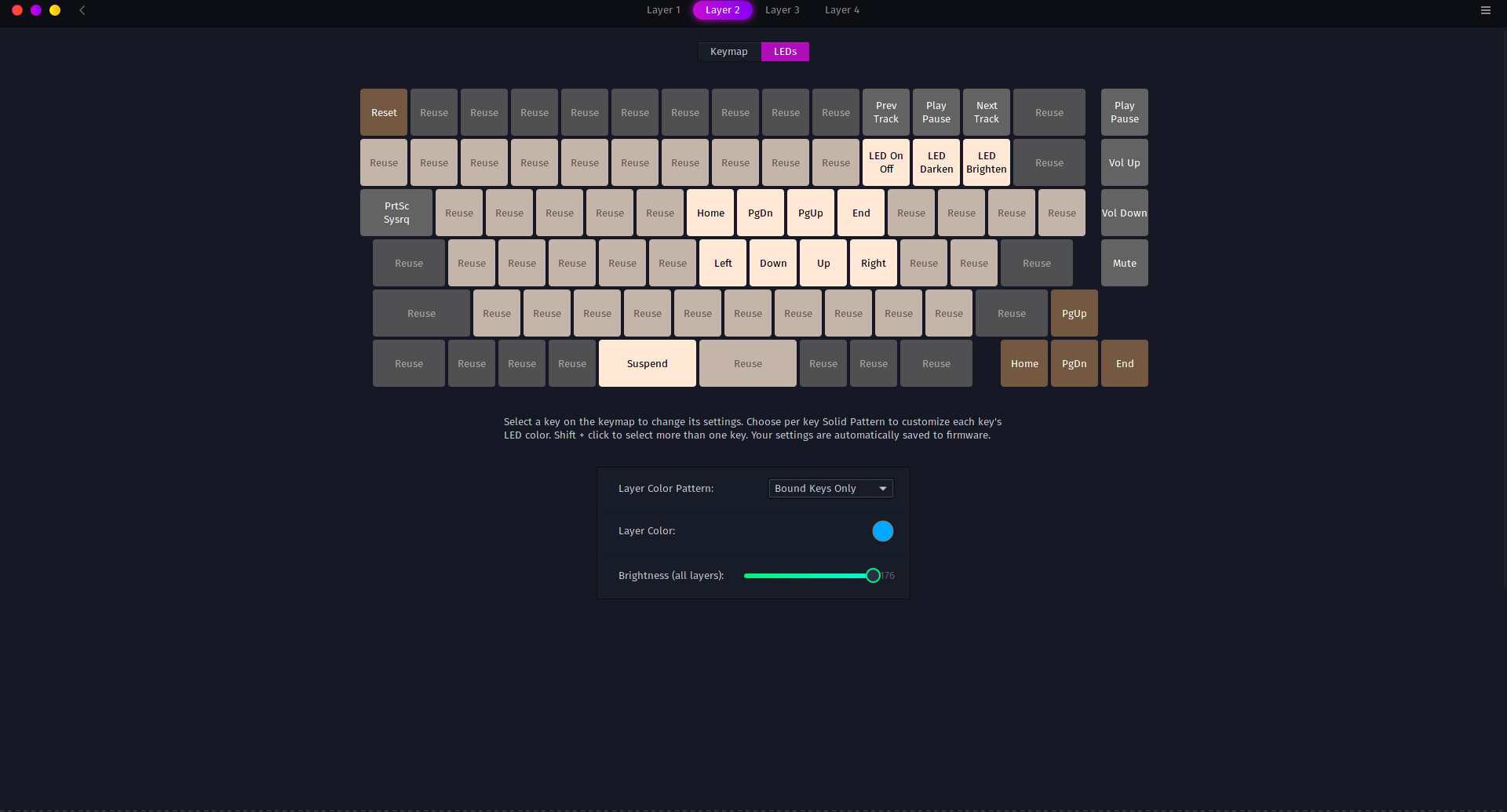
Let’s say you’re an audio editor. You can customize the third keyboard layout to act as different functions for your audio editing program. Now let’s say you’re also a 3D artist. Blender is a program where keyboard memorization is crucial, because it can save you a lot of time when working on 3D models. You can customize the fourth layout and map keys to various keyboard shortcuts that Blender has. Or let’s say you wanted to have a NumPad. You can customize any available layer and modify the keys to your will. This maximizes your time and efficiency on the desktop, while leaving a small footprint on the keyboard itself. It’s brilliant.
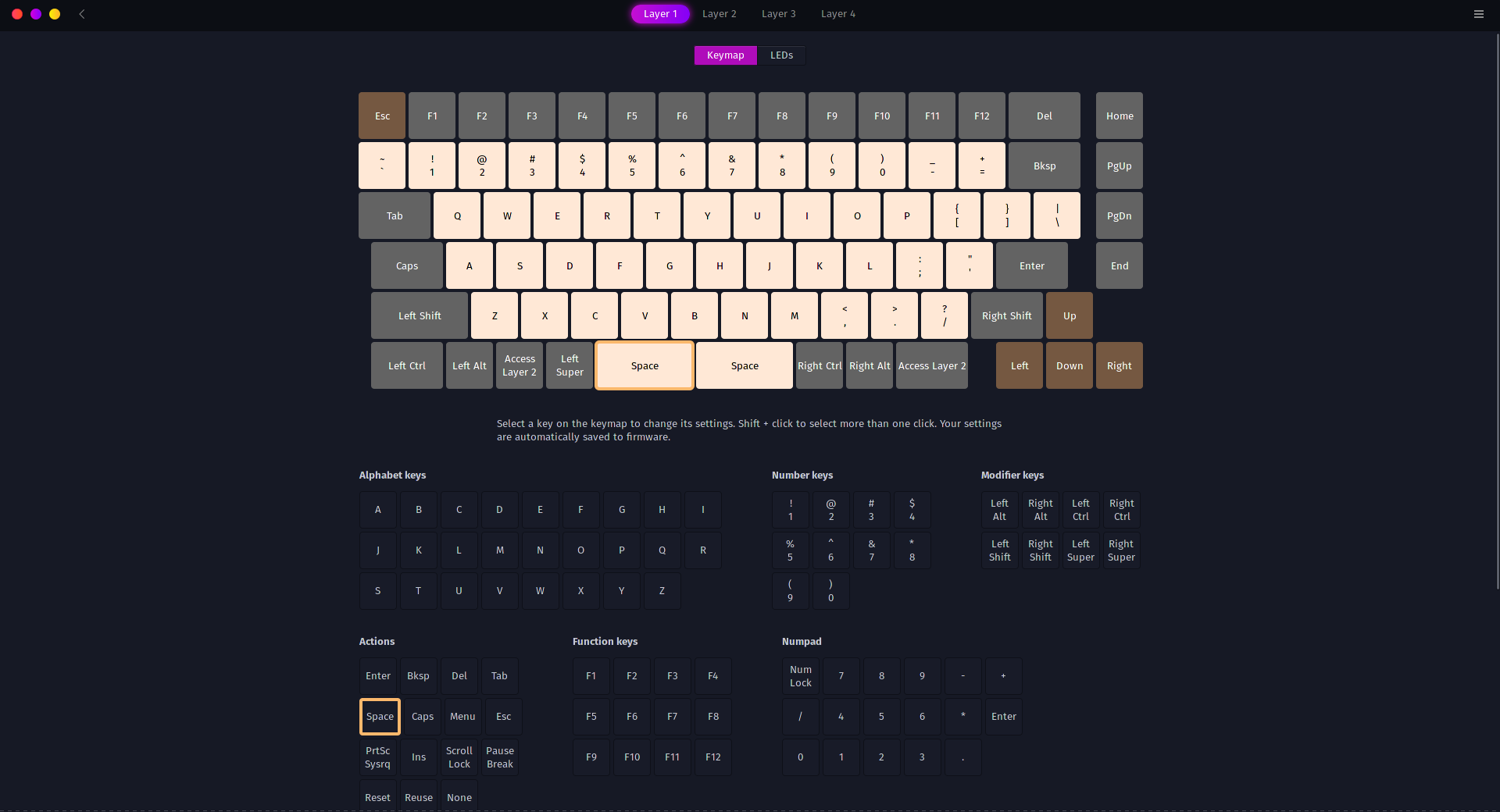
The best part about the configurability of the Launch? Any changes made to the keyboard layout through the Keyboard Configurator app are saved to the keyboard’s firmware. If you work with multiple computers, you can easily take the keyboard out, reconnect it to another, and all changes will be loaded automatically. No need to configure the keys again.
The Launch is made and manufactured in Colorado, USA. Not only is the Configurator app open-source, so isn’t everything about the keyboard itself. The chassis is open-source, the firmware, the PCB…so, if you wanted to and you had the parts, you could make the same exact keyboard yourself, and probably save yourself hundreds of dollars compared to buying the actual product. Check out the source design files on GitHub.
How’s gaming? Heh, well, I wish I could tell you, but I rarely play a game with a mouse and keyboard. And I don’t want to spend the time trying to get over the awkward phase of transitioning from a gamepad to a keyboard and mouse (although that would probably help a lot with precision-heavy games, such as first-person- or third-person-shooters). I’d have to lend this unit over to one of the editors and have them test the gaming aspect side of it to get a better report on this. That being said, it’s probably likely that gamers will benefit from this keyboard, seeing as it’s mechanical and the ability to switch between layers on the fly probably gives a much needed boost for getting that grenade out that much faster.
I mentioned earlier that in the box, there’s a few extra keys. By using the Keycap puller, you can easily extract one of the keys on the keyboard, and pop in another one. In addition to being able to replace the Space Bar with a different key, you can change the color of the Escape key and the arrow keys to either blue, brown, or red. My only complaint here is that this causes color inconsistency; most of the keys are either white or gray, and the arrow and Escape keys will stick out like a sore loser, simply because they’re a different color.
Here’s another complaint that I have: the $285 price tag this thing carries. Never have I seen a keyboard that expensive. At that price point you’d expect the keyboard to at least be wireless, but that’s not the case. I guess it just goes to show the difference American workers get paid for working on something like this, in steep contrast with the amount Chinese workers get paid for working on their products, seeing as this was made in the USA. It may also be due to the fact that System76 probably isn’t trying to make millions of these keyboards; it’s a relatively niche product from a niche company. Even if the keyboard was wireless, you couldn’t convince me to buy something this expensive. It doesn’t matter how pretty the RGB lights are, how clicky the keys are, or how much time I save by switching between layers on the fly. Any keyboard over $100, to me, is not worth it.
Is this better than the other mechanical keyboards out there? Hard to say since the only one I can compare to is the Corsair keyboard that I have. I would definitely save a lot of time doing day-to-day work on my desktop using the Launch after customizing it over the Corsair keyboard. The clickiness of the keys sounds more satisfying as well. Are these benefits worth the $285 though? No, definitely not in my mind.
That being said, if the price isn’t a barrier for you, the Launch is a great keyboard. It’s definitely something a programmer would want to have with the limitless customization options available, or those who use a desktop for more than just web browsing. The RGBs are a nice touch, the clickiness of the keys sounds satisfying, and the small form factor, combined with the firmware, make traveling with this a breeze. Head over to the Launch page if you want to order one.
Summary
The good:
- satisfying clickiness
- beautiful RGB lights that can be customized
- a ridiculous amount of customization options, from what the keys do to swapping keyboard layers on the fly
- changes to keyboard mappings don’t need to be made again when switching between PCs, thanks to the firmware
- a couple of extra USB-C/USB 3.0 ports
- split Space Bar that allows for other keys to take its place
- keycaps can easily be removed and replaced with other keys
- open-source design that allows others to make and modify the parts as needed
The not-so-good:
- outrageous price tag
- no wireless functionality
- only the Escape and Arrow keys can be customized color-wise
- the Backspace may be a bit smaller than what you’re used to, and some other keys may also require some re-adjusting
- no Caps Lock LED indicator
